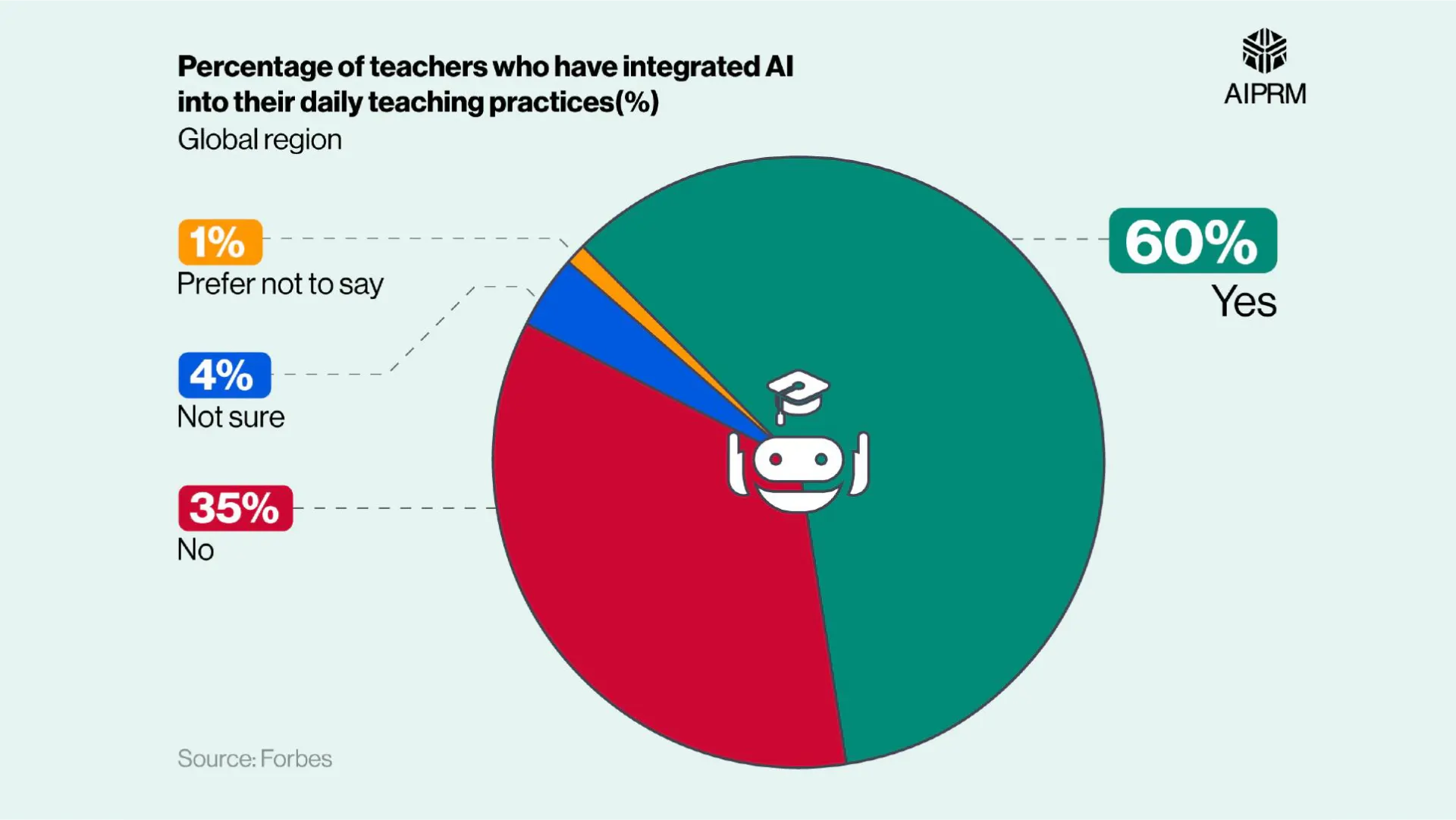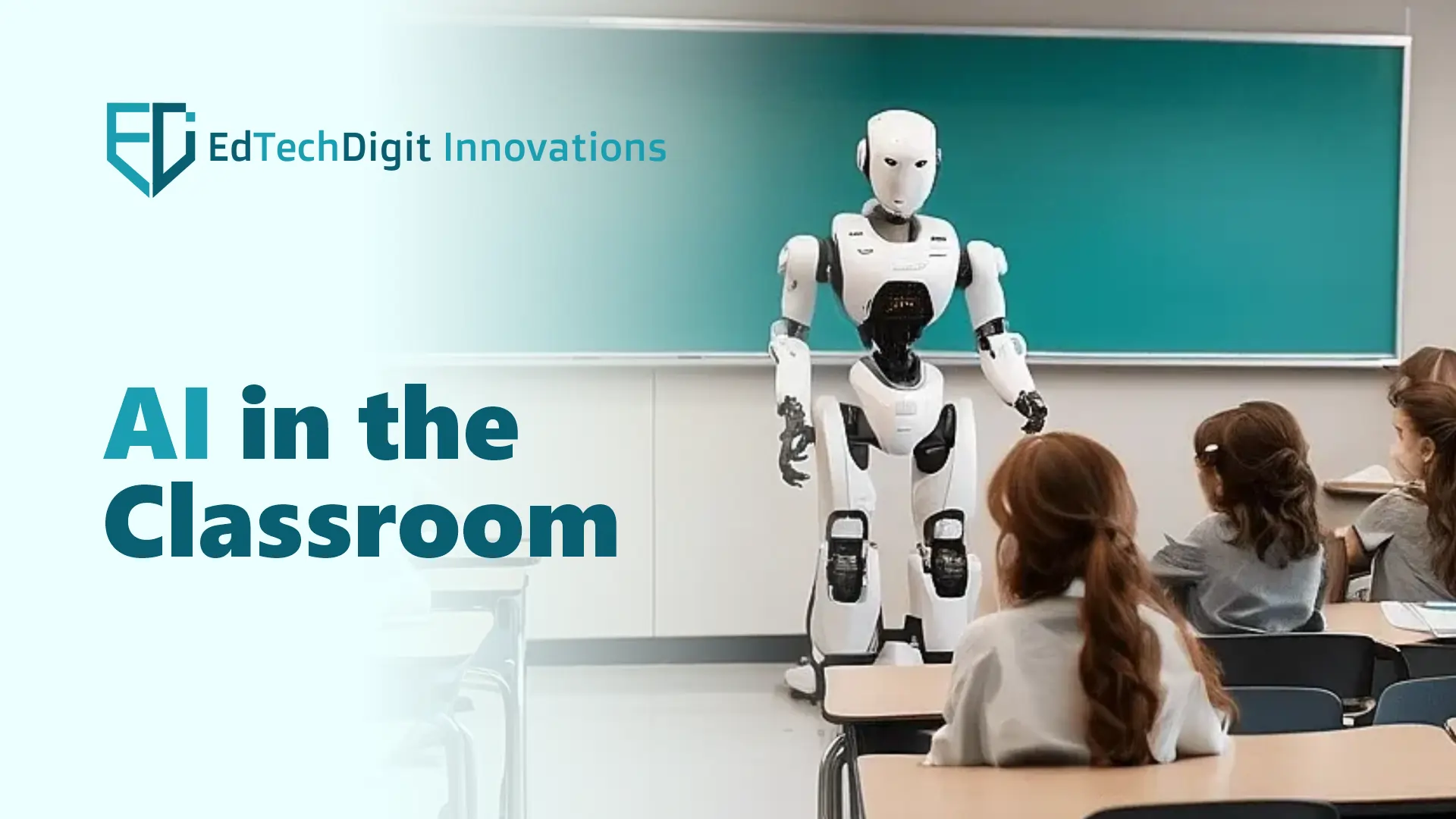Technology and education go hand-in-hand. In the last few decades, we have seen how educational institutes and universities have effectively used technology in education to transform the learning and teaching experience as well as ease out administrative process. The latest and highly acclaimed artificial intelligence is no exception, which is rapidly transforming the educational landscape. With AI in classroom, institutes can offer personalized learning experiences, automate repetitive and mundane tasks, as well as provide accurate student feedback.
But are there only good things that come with AI or any other technology in education? How are EdTech companies looking at these opportunities? And what are the challenges associated with using AI-powered learning platforms?
Let’s answer all these in this informative read.
AI in Education – Overview
Before we dive deep into the power of AI in education, let us see how educators are adopting this technology.

According to Forbes, 60% of teachers are already using AI in their daily teaching practices. Not so surprisingly, around 19% of primary teachers also admit to having used AI as a part of their teacher training program, as reported by RAND, American School District Panel, and CRPE.
Educators can use AI-powered tools like chatbots that can assist with queries, whereas analytics can help educators easily identify learning gaps and improve outcomes. Technologies like natural language processing, Augmented Reality and Virtual Reality, deep learning, etc., are the backbone of AI-powered learning platforms.
Using AI in the classroom definitely offers several advantages, but also comes with serious challenges to address. The next sections will delve deeper into the pros and cons of AI in education.
AI in the Classroom – Benefits Explore
Let's first check out how using AI in classroom can bring transformative learning, teaching, and administrative experience.
There are numerous advantages AI offers – the prominent one being personalized learning. AI systems can easily adapt the content and pace of the course according to individual students’ strengths, weaknesses, and learning styles. With a personalized learning experience, students demonstrate better engagement that ultimately improves results.
Next, the automation capabilities of AI can be used to make administration more effective. Tasks like grading, scheduling, progress tracking, automated feedback, and more can be easily handled by AI. It will free up teachers’ time to focus on more productive work, like student interaction.
AI-powered learning platforms come with virtual tutors and chatbots that provide 24/7 support to students by answering their questions, clearing doubts, and solving their problems even after classroom hours.
AI makes world-class education accessible to everyone. For example, students with disabilities or in remote places can access quality education right at their homes. AI features such as speech-to-text and real-time translation can help students with listening problems or with language barriers.
Not just that, advanced AI technologies like predictive analytics can help accurately detect students who are likely to fall behind so that educators can take necessary actions promptly.
EdTech companies are actively introducing interactive and immersive learning experiences in their platforms through gamification, simulations, and adaptive testing. All these helps improve the overall quality of education in modern times.
Risks of Using AI in Education
We saw several benefits of AI in education. But it is not bereft of risks and challenges. Data privacy and security are major concerns because AI systems collect and store a lot of sensitive and confidential information. These are vulnerable to data breaches and data theft if not secured properly.
Another challenge is bias in algorithms, which, if not taken care of properly, can lead to inappropriate outcomes and misrepresentation of certain student groups.
This is not it, relying excessively on AI can also lead to less student-teacher (human) interaction, which can affect social and emotional development.
The role of EdTech Companies
The role of EdTech companies in the effective implementation of AI in classroom is very important. Here’s what they can do to promote the use of technology in education:
- Cost – EdTech companies need to reduce the price of AI tools to be affordable for all kinds of institutes.
- Human–Interaction – The AI tools developed for education must support and not replace teachers to preserve essential emotional and social learning in the classroom.
- Privacy and Security – Companies must ensure they protect student data properly
- Improve AI features – AI is still a developing technology, and its features can be improved. EdTech companies should enhance their creativity and contextual understanding.
- Ethical Considerations – AI tools used in educational institutes should be transparent and responsible. They must comply with laws and promote fair usage.
Summing up!
The role of AI in modern education cannot be neglected. It has numerous benefits, right from enhancing learning and teaching experience, personalized and adaptive learning, to streamlining administrative processes.
However, educational institutes and Edtech companies must address the ethical challenges, data privacy, and security risks effectively to ensure the beneficial use of AI in education.
At the end, it is the role of educators to effectively implement AI in the classroom with caution and develop an environment to encourage social interaction, use technology for learning, and improve engagement. As we enter the future, we can see more creative and better use of AI to power education.

